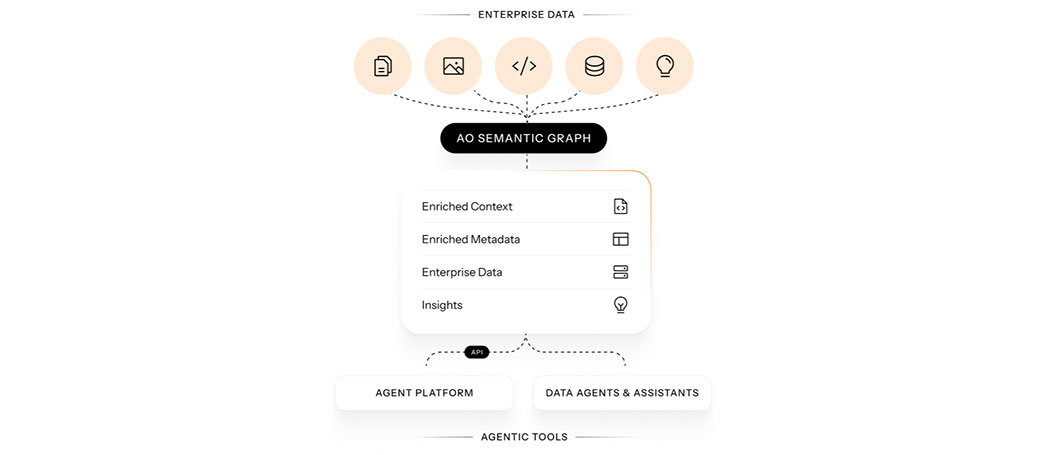
Customer Context – better customer service through knowledge graphs

As a Utility, wouldn’t it be useful to understand a customer’s recent experience with your company even as they are calling in? When a frustrated customer – let’s call her Jill – contacts a customer care representative, she’s far more likely to be unhappy if she’s recently called five times about an unresolved service issue. Or that her electric bill is four times what his neighborhood average is.
What if you could predict whether Jill is happy, angry, or frustrated so you can create a more empathetic, helpful experience? That is the task of customer context.
What is Customer Context?
Customer context seems obvious – this is a customer’s preferences, likes and dislikes, their history interacting with companies, and their sentiment towards these companies. However, finding that information and using it to gain knowledge and insight about your customer is hard.

Where does the data that forms your “360 Customer View” come from? How accurate and accessible is it? With “silo-busting,” a mantra we’ve all grown accustomed to, it seems like that’s the place to start. Information silos are getting in the way of a deeper understanding of your customer, right?
As much as we speak the mantra, silo-busting is a big challenge in established organizations. Is there a way to smartly navigate through the silos instead of the challenge and expense of tearing them down to the ground?
Better Customer Context with Knowledge Graphs
There’s no need to remove the silos if you can access the data across silos. You can break through the barriers without breaking down the silos. Companies that have successfully provided an experience of connecting many types of data across silos have used knowledge graphs to establish these critical links.
Facebook uses a knowledge graph of people to understand them better for ad targeting, and Google uses a knowledge graph of the internet to understand information and give you better search results. The list goes on.
[Read more about Knowledge Graphs and Ontologies here]
Knowledge graphs combine information across multiple systems to give you a bigger picture of the past and future. And, you can build a better understanding of your business using a knowledge graph to map your business and your customers, using publicly available data (weather, social media) as well as data from within your company (Enterprise Resource Planning (ERP) data, customer systems data, etc.). This creates a “digital twin” of your business that you can use to build new types of applications, discover new insights, and create new experiences for your customers and employees. This gives your company the ability to:
- Find the right data and insights to deliver timely customer outreach
- Find the right data and insights to solve a customer’s issues across many systems
- Anticipate how to handle a consumer’s post-interaction engagement
Why Customer Context Matters to Utilities?
Every company wants to know when a customer is satisfied and especially when they are not satisfied so you can serve them better and retain them as customers. A Utility can better serve the public with a relevant and complete snapshot of how they interact with their customers.
What if, when Jill calls in, your customer service team can locate her profile instantly with a phone number, name, or address – without her needing to track down her account number? What if you can see that her recent bills are high and that she should be scheduled for a meter replacement? What if you can see the status of a service crew en route to fix a serious outage affecting Jill? With a full flow of data via knowledge graphs available to customer service and service techs, every interaction Jill has had with the utility company is available, so any problems she is facing can be understood in context and resolved quickly and efficiently.
App Orchid has built a Customer Context app using knowledge graphs to build a unique problem-solving app that can address 80% of common customer inquiries within minutes. Information from multiple systems is displayed on a single customizable pane of glass, with nothing is more than three clicks away. AI can give you insight into customer sentiment as well as Next Best Action recommendations. The best part – you can customize the information with what’s relevant for your call center reps. For example, if you get many calls asking about outage status or field service ETAs, you can quickly connect and surface that information to your customer context screen.

Among other things, the Customer Context app:
- Anticipates common issues so you can develop a game plan to address them
- Enables predicting customer sentiment when customers contact the call center
- Gives CSRs the information they need to solve problems on the spot, including information that’s typically hard to find
- Reduces the time customers spend with the call center
Learn more about Customer Context here.
Related articles



The Best Path to
AI-Ready Data
Experience a future where data and employees interact seamlessly, with App Orchid.

